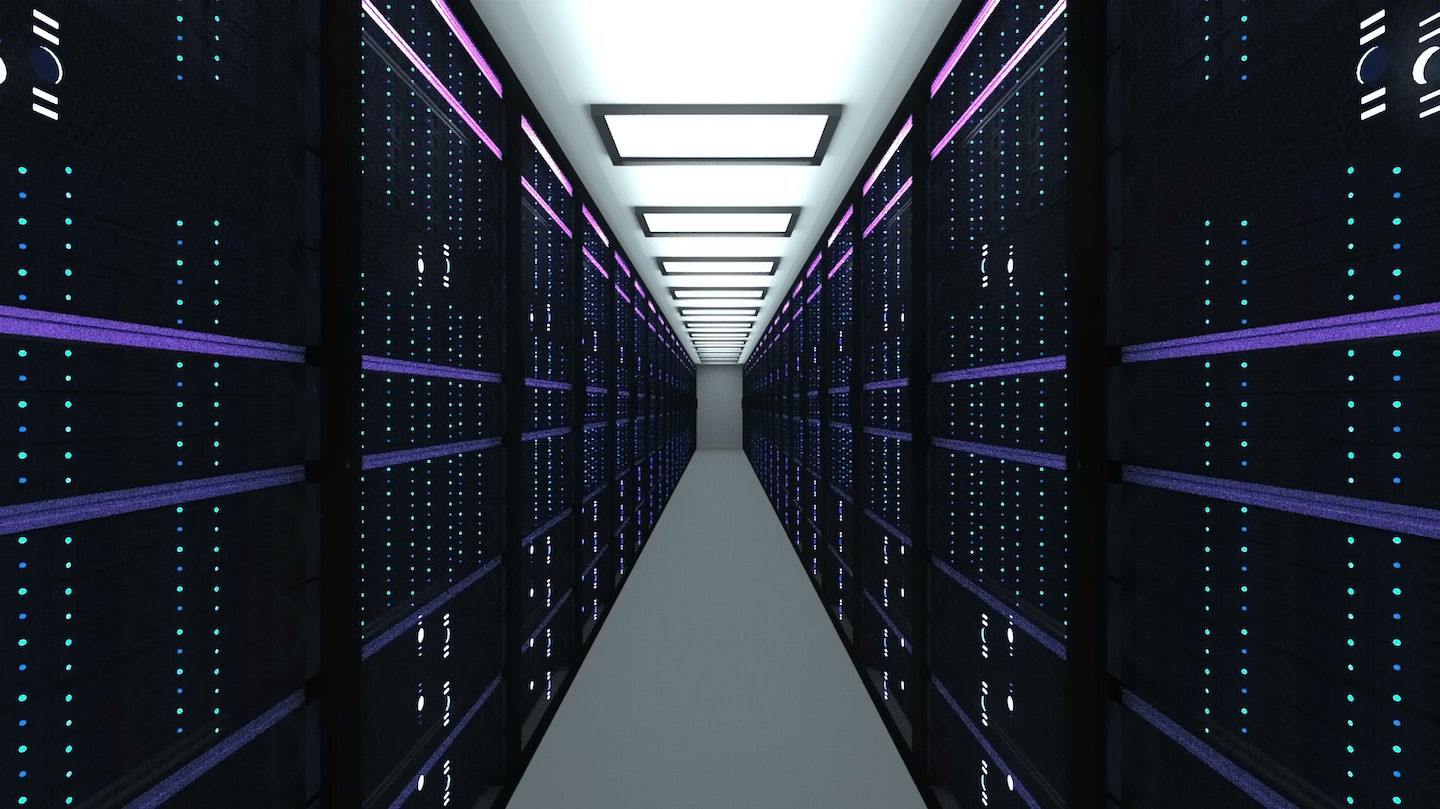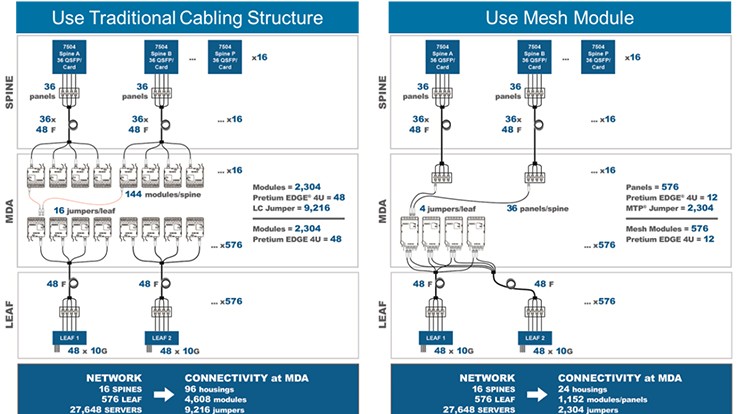Port Breakout and VSFFC: Optimizing Sustainability in Data Centers
Cindy Ryborz from Corning Optical Communications, on supporting higher speeds, compressing computing power, storage and data throughput, and improving energy efficiency.

©weerapatkiatdumrong | istockphoto.com
The pressure on data center operators is increasing. They have to meet their own sustainability targets and legal requirements, while also having to contribute to the sustainability ambitions of their customers. For an industry that accounts for about 1-2% of the global energy consumption, this poses a serious challenge. Servers and cooling systems in particular are power-intensive. In 2020 in Germany alone, the power consumption of data centers amounted to 16 billion kilowatt hours, according to the industry association Bitkom, which is more electricity than the country’s capital, Berlin, consumes in a year.
Complicating matters, some cities are introducing restrictions on the construction of new data centers. Singapore has just lifted its moratorium on building new data centers, in place since 2019, and instead is imposing stricter resource efficiency requirements. Similarly, the Rhine-Main area around Frankfurt, in Germany, is a popular location due to the DE-CIX internet hub. In addition to restricting the builds to certain commercial areas, the city also wants to implement specifications for energy efficiency and building design so that the data centers can be integrated as well as possible into urban planning.
The German government has also stated in the coalition agreement that newly-opened data centers should be climate neutral by 2027. The European Commission even wants all data centers in Europe to be climate neutral by 2030.
The choice of location and the use of renewable energies can help achieve sustainability goals and reduce the environmental impact of a data center. But even though overall power consumption of data centers has gone up, network operators and infrastructure solutions manufacturers have not been idle. The efficiency of data center infrastructures has increased significantly in recent years. While the average PUE score (power usage effectiveness) was still 1.98 in 2010, it dropped to 1.63 in 2020. This corresponds to an efficiency increase of 21%. Just as active components, i.e., transceivers, switches and the like, can have a measurable impact on the sustainability of data centers, the same applies to cables, connectors and modules.
The challenge remains to support ever higher speeds while accommodating and compressing more computing power, storage and data throughput in the same space. Real estate is costly, both in colocation data centers, where tenants pay by rack space, and for users who are reaching the capacity limits of their own data centers. Densification helps to reduce the space required and thus the costs, while modern transceivers deliver ever faster transmission speeds. But how do we connect these solutions as sustainably as possible and in a way that takes up as little (expensive) space as possible?
Small connectors for high speeds
There are two answers: Parallel Port Breakout and VSFFC (Very Small Form Factor Connectors). Port Breakout is the use of high-speed transceiver ports for parallel optical transmission in an 8-fiber-based (Base-8) system with speeds of, for example, 800G, but not operated as a single port. Instead, they can be used, for example, in spine-leaf architectures in a 4 x 200G mode or as leaf-server architecture with 400G ports that are split and operated as 8 x 50G ports. So one high-speed port is disaggregated into multiple ports, each with lower transmission rates.
This application meets the bandwidth requirements but consumes much less power and subsequently requires less cooling than when utilized at 800G, which is still a long way off for most data center operators. The same also applies to speeds of 40G, 100G or 400G in the hyperscale/cloud area, which are predominantly operated today. The power consumption of a 100G duplex transceiver, for example, is about 4.5 watts for a QSFP-DD type transceiver. A 400G parallel-optic transceiver, in contrast, consumes only 3 watts per port when operated in breakout mode as 4 x 100G ports. This can save up to 30% of power, regardless of the additional savings in air conditioning as well as the power consumption of the switch chassis and their contribution to space savings.
Port Breakout also has another advantage. For future updates, data center operators can upgrade to higher speeds with just a few changes in the passive network infrastructure, without the need to change technology or completely replace cabling components. Sustainable data center management and low downtime in the event of changes or extensions to the network go hand in hand.
With the launch of 400G and later also 800G transceivers, additional connector interfaces have been added to the traditional LC duplex and MPO-12 cabling interfaces that we know from the data center environment. These include new MPO designs MPO-16 and MPO-12 DD (double row), as well as SN, CS and MDC as new VSFFC formats.
Up to three MDC or SN connector interfaces can be accommodated in the footprint of an LC duplex connector. This promises up to three times the density and can contribute to lowering the total cost of ownership. Furthermore, MDC and SN connector formats offer the possibility of port breakout directly at the transceiver level, should point-to-point cabling be required or practical.
Ready for future upgrades
High-performance transceivers and a parallel-optical Base-8 cabling infrastructure provide network operators with options to simplify future upgrades without having to change or replace the entire infrastructure. However, it is important to ensure sufficient fiber reserves in the backbone so that extensions can be implemented with as little change as possible. For example, if sufficient fiber reserve has been planned, upgrades from 10G to 40/100G or 400/800G can be implemented by replacing MPO/MTP to LC modules and LC duplex patch cables with MPO/MTP adapter panels and patch cables. With the replacement of just a few components, the network is again ready for the future without having to make any changes to the actual backbone.
Modular fiber optic enclosures also allow a mix of different technologies and the integration of new technologies such as the VSFF connectors. Enclosures that can accommodate 8-, 12-, 24- and 36-fiber modules are already available. Bend-resistant optical fibers also ensure a cabling infrastructure that is durable, reliable and resilient. Flexible hardware like this helps to keep the network design scalable and as simple as possible. If requirements then grow, the optical network technology can grow along with it without too much additional investment.
Applications are diverse – after all, growing amounts of data are accumulating everywhere. Let's say an insurance company launches a new car policy that, for example, monitors the driving habits of the policyholder and offers benefits in return. This generates large amounts of data, which in turn must be collected, stored and processed in the insurance company's data center. For this, the previous storage and data transfer capacities must be increased - but, if possible, without taking up more space. Port breakout applications or new developments in cabling components such as the VSFF connectors can enable a higher density of network connections that can be accommodated in the same space and do not generate further costs in terms of rack space for network closets.
Well equipped for the future
Ultimately, customers have the choice of a significantly increased number of transceiver technologies, optical interfaces and transmission speeds. What is certain, however, is that Base-8 cabling offers a safe investment on the basis of which -R4 or -R8 transceiver models can be mapped. This way, application-neutral structured cabling supports current technologies and at the same time ensures that customers are well-equipped for the future. This applies not only to Ethernet protocols, but also to FiberChannel in the Storage Area Network (SAN).
What transceiver models for 1.6 and 3.2T will look like in the future remains to be seen. The models used for the current speeds (pluggable optics) have too much power consumption at such high speeds to be economical. Developments in transceiver technology are therefore taking new paths, e.g. towards onboard optics or co-packaged optics, but fiber optic connectors and new fiber technologies will also play an important role in their development. Over recent decades, a variety of connector types have been launched to the market, and we will continue to see new models in the future, which in turn will enable new speeds and architectures.
Cindy Ryborz is a marketing expert for data centers. She holds a Master of Arts degree from Humboldt University in Berlin, Germany. Starting her career in Corning Optical Communications with the customer care group in 2008, she joined Marketing in 2012, executing Corning’s Local Area Networks strategy across the EMEA region, before moving into the strategic Marketing Manager role for Data Center in 2018.
Please note: The opinions expressed in Industry Insights published by dotmagazine are the author’s own and do not reflect the view of the publisher, eco – Association of the Internet Industry.





